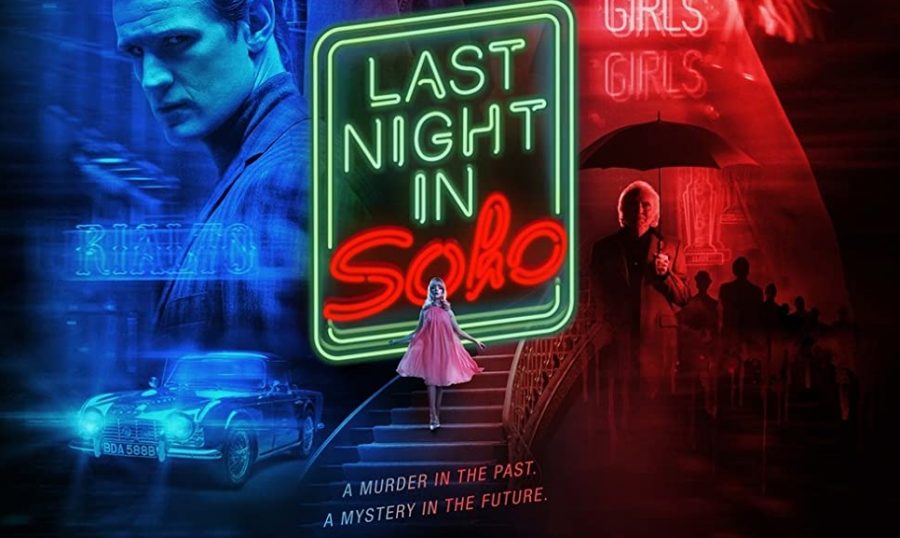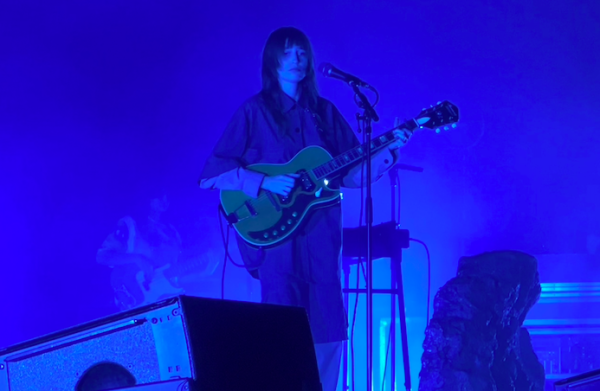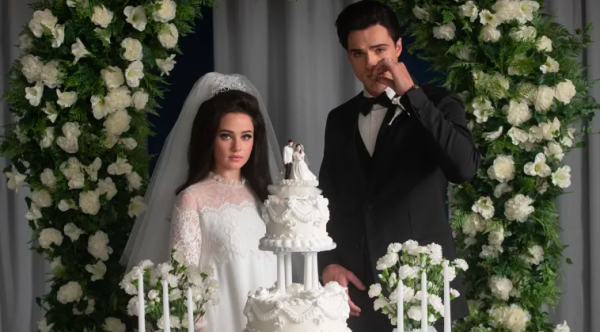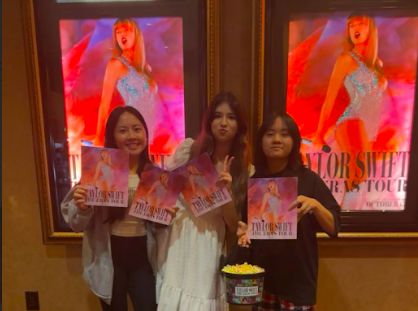‘Last Night in Soho’ Delivers Haunting Entertainment
November 19, 2021
An intimate thriller that descends into twisted mind games, Edgar Wright’s Last Night in Soho follows Eloise “Ellie” Turner (Thomasin McKenzie), a shy and eventually outcasted fashion design student obsessed with the 60s. What begins as strange, recurring dreams, soon has her, and the audience, questioning the line between dreams and reality.
When Ellie’s hopes of being accepted into a fashion school in London become reality, her grandmother warns her of the city’s dangers and the effects it had on her late mother. We catch sporadic glimpses of her dead mother throughout the movie through Ellie’s strange visions, as if alluding to a fate she can’t escape.
She spends the first few nights in the school’s dorms but quickly gets sick of the active nightlife and bullying from her neighbors and roommates. She comes across an intriguing top-floor bedroom for rent. The owner is Ms. Collins (the late Diana Riggs), an old woman who seems to share Ellie’s love for the 60s.
Ellie has no trouble falling asleep on her first night in the quaint bedroom, besides the blinking neon light from the restaurant next door. She soon finds herself in a beautiful dreamland- or so she thinks. Here, we meet Sandie (Anya Taylor Joy), an aspiring singer and dancer in Soho. The viewers get to know Sandie’s story through Ellie’s strange, mirrored dreams. During her first dream, Sandie meets her soon-to-be manager, Jack (Matt Smith). We begin to notice Ellie is both Sandie and an observer. In the mirror, she replaces Sandie’s reflections, yet she is unable to control Sandie’s movements, words, or even interact with her.
This first dream sequence is magical, and you can feel the excitement and fascination from Ellie. The incredible yet mind-boggling cinematography and set design come into play, and when Ellie wakes up from her dream, you can’t help but feel the same disappointment she does. The audience is left just as captivated yet bewildered by the whole dream as she is.
Ellie instantly becomes invested in Sandie’s life. She’s eager to leave school every day and can’t wait for nightfall when she can drift back to sleep to revisit Sandie in her dreams. Ellie soon begins using Sandie as her muse. She changes her hair, buys the same coat, uses the same dance moves, even tries a pick-up line that Sandie used during her dreams. Soon her fashion designs are identical to the pieces Sandie wears.
The fantasy-like dreams soon start to take a sinister turn- her record player even turns on by itself. What was once a whimsical escape from her real-life now keeps her up at night as she grows more and more terrified of falling asleep. Ellie becomes haunted and distracted by these dreams, completely engulfed by Sandie’s nightmare of a life. Ellie gives her best efforts to intervene, to no avail. Around town, she begins seeing ghosts of the men from her dreams and Sandie herself. She even begins to run into an old man who seems too intrigued by her blonde hair and a drawing of Sandie she left behind. She soon becomes convinced this strange man is Jack.
“It’s not what you imagine, London,” is repeated throughout the film, a piece of advice from her grandmother that Ellie now understands. She begins to feel herself unravel and wonders if it’s .time to escape London. The last 30 minutes of the film are fast-paced and filled with reveals as the movie starts to wrap up. The difference between real life and dreamland is hazy as Sandie’s life becomes intertwined with Ellie’s. As more pieces of the mad puzzle are revealed, your mind begins to spin as much as Ellie’s.
Edgar Wright doesn’t disappoint with this electric psychological thriller. The cinematography, acting, fashion, and soundtrack, in which Anya Taylor Joy lends her voice to a sultry cover of Downtown by Petula Clark, come together to create an unforgettable film.

















